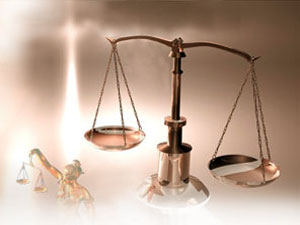Lighter skin brings less prison time for Black women?
By Nisa Islam Muhammad -Staff Writer- | Last updated: Aug 11, 2011 - 12:34:51 PMWhat's your opinion on this article?

|
The study's authors, Jill Viglione, Lance Hannon and Robert DeFina concluded, “That it is not sufficient to understand racial discrimination in terms of relative advantages of whites compared to non-whites. Among blacks, characteristics associated with whiteness appear to also have a significant impact on important life outcomes.”
“As America was premised on White Supremacy to enslave Black people since 1610, an apartheid system was developed based on skin color. The darker a person was, they were found in the fields. The lighter a person was they were found with greater opportunities in the home and with less back breaking work,” said Brian Becker of Act Now to Stop War and End Racism.
“The differences were based on how far you were from being White. Color has always been used as a selection for punishment, lower wages and back breaking work,” he added.
The study, released in July, highlighted racial disparities prevalent in the criminal justice system: While Blacks accounted for almost 13 percent of the total United States population in 2008, Blacks were approximately 28 percent of all persons arrested that same year and almost 40 percent of the total jail and prison population.
“Racism in the legal system is apparent to anyone with an independent mind to look at the statistics,” said Mr. Becker. “There are 2.3 million people in jail and another 5 million on probation or parole. A disproportionate number of them are poor and they are Black and Latino. Even though there are more poor White people in this country the poor who go to jail are usually Black and Latino.”
“Why are they in jail? Institutional racism, racism in the police department, racism from the prosecutors, racism in the jury pool and racist judges. There are 3,000 plus people on death row and the largest determinant of whether someone gets sentenced to death is the race of their victim. If the victim was White, they are more likely to get the death penalty,” Mr. Becker noted.
According to the study, previous research has explored the relationship between skin tone and life outcomes among Blacks. Blacks with lighter skin tone and facial features more indicative of a European-American descent, such as narrow nose, thin lips, or smooth hair, have long enjoyed special privilege. The perceived benefits led some Blacks to marry fair-skinned Blacks in efforts to protect light skin. Blacks who looked White often passed for White in the late 1800s and early 1900s to escape racial oppression and its attendant misery.
The plight of being a dark girl is being chronicled in an upcoming film appropriately called, “Dark Girls” produced by Bill Duke for Duke Media and D. Channsin Berry for Urban Winter Entertainment.
“I can remember being in the bathtub asking my mom to put bleach in the water so that my skin would be lighter and so that I could escape the feelings I had about not being as beautiful, as acceptable, as lovable,” says a character in a dialog from the film.
“She's pretty for a dark-skinned girl ... What is that supposed to mean?” responds another character.
Other dialog incudes: “They used to say, ‘You stayed in the oven too long.'”
“It was so damaging ... it made it seem like we weren't wanted; that we were less than.”
“The racism that we have as a people amongst ourselves is a direct backlash of slavery.”
Related news:
Long-term effects of systemic racism examined (FCN, 05-21-2010)
Being A Black Woman In The World Pt. 1 (FCN, Winnie Mandela, 03-28-2006)
What the case of Sammy Sosa says to both Blacks and Latinos (FCN, 11-30-2009)
A serious problem of inferiority (Minister Louis Farrakhan)
INSIDE STORIES AND REVIEWS
-
-
About Harriett ... and the Negro Hollywood Road Show
By Rabiah Muhammad, Guest Columnist » Full Story -
Skepticism greets Jay-Z, NFL talk of inspiring change
By Bryan 18X Crawford and Richard B. Muhammad The Final Call Newspaper @TheFinalCall » Full Story -
The painful problem of Black girls and suicide
By Charlene Muhammad -National Correspondent- » Full Story -
Exploitation of Innocence - Report: Perceptions, policies hurting Black girls
By Charlene Muhammad -National Correspondent- » Full Story -
Big Ballin: Big ideas fuel a father’s Big Baller Brand and brash business sense
By Bryan Crawford -Contributing Writer- » Full Story






 Click Here Stay Connected!
Click Here Stay Connected!








